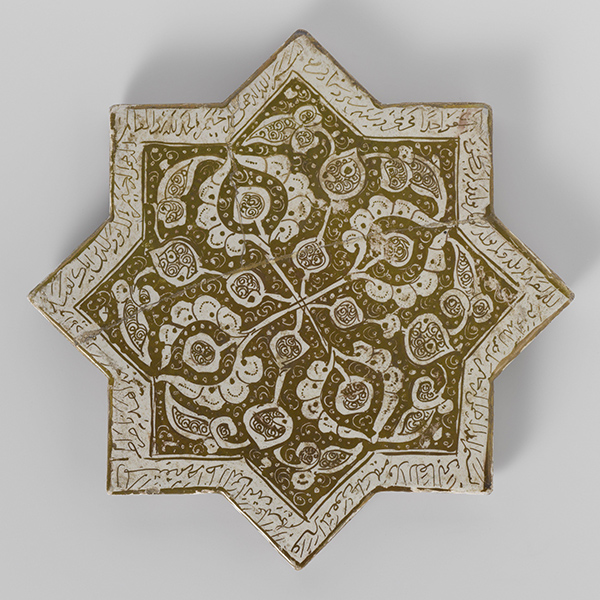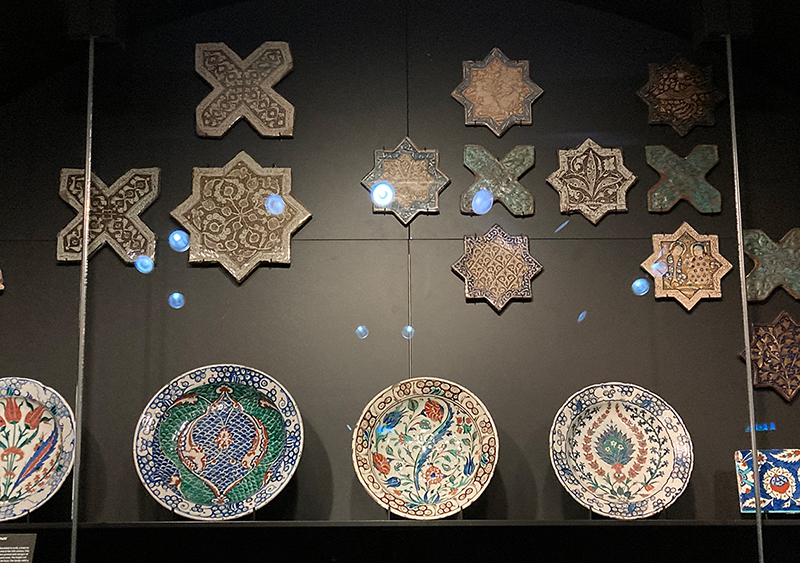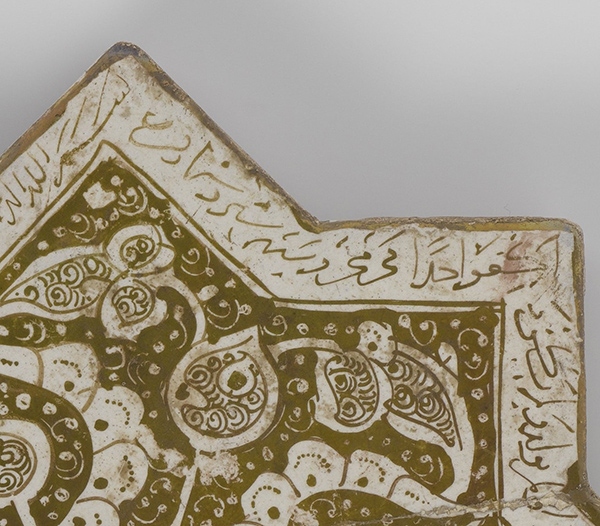1Amsterdam, Netherlands

Star tile Attributed to the Emamzadeh Yahya at Varamin Iran, likely made in Kashan, dated Moharram 660/December 1261 (see detail below) Fritware (stonepaste), luster-painted on opaque white glaze 12.13 in. (30.8 cm) Rijksmuseum, Amsterdam, BK-NM-11797
The Rijksmuseum purchased this star tile from Hakkı Bey in Paris in 1904. The year before, the museum had purchased two cross tiles also likely from the tomb from French dealer Stanislas Baron (d. 1910) in Paris (BK-NM-11750-A and 11750-B). Around 1938, the star was included in a mixed display of Islamic ceramics and carpets alongside Italian majolica (fig. 1). Today, the three tiles are included in a display of Islamic ceramics combined with those from East Asia (fig. 2).



The tile features a combination of two short Qur’anic suras commonly found on stars and crosses attributed to the Emamzadeh Yahya. Over half of the star (the left side as oriented here) carries the opening sura al-Fatiha (Hamd), composed of seven verses. The rest (the right side) is inscribed with one of the final chapters, sura al-Ikhlas (112), composed of four verses. It is followed by the date (fig. 4), including the month and year (compare to Table 1 in this recent article).

Sources:
- Rijksmuseum digitized inventory cards
- Hassanalipour, Hamid, and Hossein Sedighian. “Analytical Research of the Luster Star Tiles of Emamzadeh Yahya in Varamin.” Negarineh Islamic Art 10, 25 (2023): 191–204. (in Persian) [Negarineh Islamic Art]
Thanks to Hossein Nakhaei for identifying the tile from the Getty photograph and Femke Dierks for sharing acquisition information.
Citation: Keelan Overton, “Star tile.” Luster cabinet entry in The Emamzadeh Yahya at Varamin: An Online Exhibition of an Iranian Shrine, directed and edited by Keelan Overton. 33 Arches Productions, January 15, 2025. Host: Khamseen: Islamic Art History Online.
